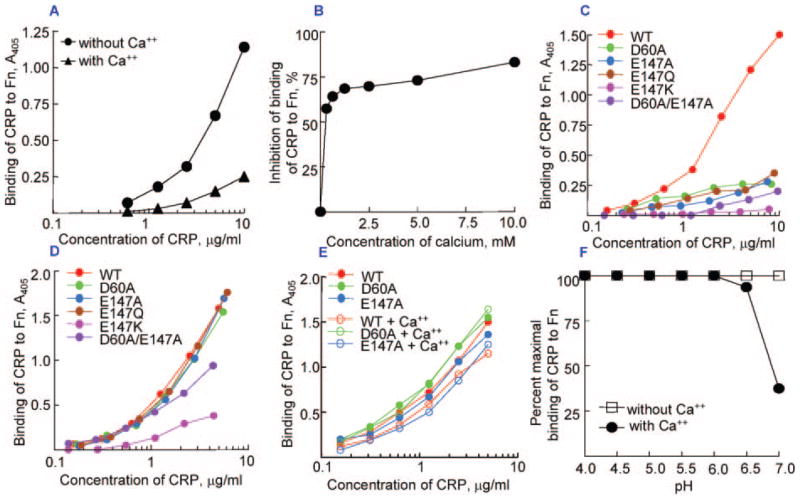Fig. 4. Binding of CRP to Fn.
Microtiter wells were coated with Fn. A, increasing concentrations of purified nCRP in TBS, pH 7.0, with and without 5 mM CaCl2 were added to the wells. B, nCRP, 10 μg/ml in TBS, pH 7.0, containing increasing concentrations of CaCl2 were added to the wells. Binding of CRP to Fn in the absence of CaCl2 was taken as 100% to calculate percent inhibition. C, increasing concentrations of purified WT and mutant CRP in TBS, pH 7.0, without CaCl2 were added to the wells. D, increasing concentrations of purified WT and mutant CRP in TBS, pH 5.0, without CaCl2 were added to the wells. E, increasing concentrations of purified WT and mutant CRP in TBS, pH 5.0, with and without CaCl2 were added to the wells. F, increasing concentrations of purified nCRP, 10 μg/ml in TBS at increasing pH, with and without Ca2+ were added to the wells. The binding of CRP to Fn in the absence of Ca2+ at various pH was plotted as 100%. In all, bound CRP was detected by using polyclonal anti-CRP antibody as the reporter. All experiments were performed at least three times, and a representative experiment is shown.

